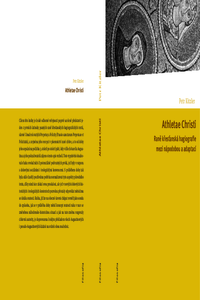Athletae Christi. Raně křesťanská hagiografie mezi nápodobou a adaptací
Athletae Christi. Early Christian Hagiography between Imitation and Rewriting
dizertační práce (OBHÁJENO)

Zobrazit/
Trvalý odkaz
http://hdl.handle.net/20.500.11956/53151Identifikátory
SIS: 102231
Kolekce
- Kvalifikační práce [22841]
Autor
Vedoucí práce
Oponent práce
Pokorný, Petr
Šubrt, Jiří
Fakulta / součást
Filozofická fakulta
Obor
Klasická filologie
Katedra / ústav / klinika
Ústav řeckých a latinských studií
Datum obhajoby
14. 6. 2013
Nakladatel
Univerzita Karlova, Filozofická fakultaJazyk
Čeština
Známka
Prospěl/a
Klíčová slova (česky)
raně křesťanská literatura, hagiografie, mučedníci, Passio Perpetuae et Felicitatis, Augustinus, druhý literární životKlíčová slova (anglicky)
early Christian literature, hagiography, martyrs, Passio Perpetuae et Felicitatis, Augustine, literary "Nachleben"ČESKÁ ANOTACE (= předběžná náplň práce) "Umučení Perpetuy a Felicity" (Passio Perpetuae et Felicitatis) patří mezi nejvýznamnější texty rané křesťanské hagiografie. V poslední době mu byla věnována značná badatelská pozornost, nicméně jeho "Nachleben" zůstává stranou zájmu. Jedná se přitom o velmi důležitý aspekt v dějinách tohoto textu i látky. Text sám si brzy vydobyl jistou kanoničnost a autoritu u věřících, v církvi i mezi křesťanskými intelektuály, ačkoli obsahuje řadu inovativních prvků, které mají potenciálně subverzivní charakter vzhledem k uspořádání křesťanské společnosti a církevní hierarchii. Právě přítomnost těchto prvků, v kombinaci se všeobecnou oblíbeností Perpetuina příběhu, vedla k celé řadě přepracování a úprav ještě během pozdní antiky. Cílem práce je jednak analyzovat text sám s důrazem na tyto prvky se sociálně subverzivním potenciálem, jednak popsat jeho manipulativní réécriture u pozdějších křesťanských autorů (Tertullianus, Augustinus, pseudo-Augustinus).
ANGLICKÁ ANOTACE (= předběžná náplň práce) Passio Perpetuae and Its Reflection in the Literature of Ancient Church The "Passion of Perpetua and Felicity" (Passio Perpetuae et Felicitatis) is one of the most renowned texts of early Christian hagiography. Accordingly, it has been enjoying a renewal of scholarly interest in the last decades. However, surprisingly little attention was paid to its literary "Nachleben", and there exist virtually no studies focusing on its reception in the subsequent literature of the early Church. Seemingly simple narrative, describing the martyrdom of a group of North African Christians, has been held in high esteem since its composition. It acquired almost "canonical" status and was considered authoritative not only by the mass of simple believers but by the Christian intellectuals, too. Though highly venerated in the early Church, it contained a number of innovative and - in the context of Antique and early Christian society - potentially subversive features. These novel features were felt to undermine the existing social order and hierarchy, and it was necessary to "explain them away" in order to make the text more compliant with traditional and generally accepted social values. This was then often taken into account, when later authors and interpreters refer to the text. The...
